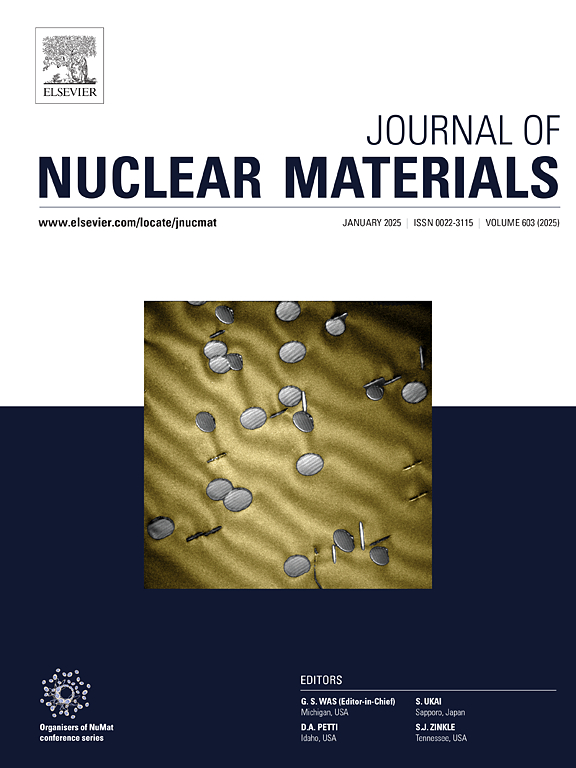Effect of trace Al and Ti elements on borosilicate glass corrosion resistance of Inconel 690 alloy
IF 2.8
2区 工程技术
Q3 MATERIALS SCIENCE, MULTIDISCIPLINARY
引用次数: 0
Abstract
The corrosion behavior of Inconel 690 alloys with trace Al and Ti elements was investigated in borosilicate glass at 1150 °C. The results showed that the dimensional losses and average corrosion rates were decreased with trace Al addition, which showed excellent glass corrosion resistance, with an annual average corrosion rate below 0.41 mm/a. Differently, the co-addition of Al and Ti increased the dimensional losses and average corrosion rates from 7 days to 21 days, but decreased at 42 days. The trace Al elements lead to the formation of Al2O3 oxides at the grain boundaries, which hinders the diffusion of Cr3+ along the grain boundaries. The slow diffusion of Cr3+ inhibits the growth of the Cr2O3 oxide film and reduces the number of holes in the substrate, leading to excellent glass corrosion resistance. With the co-addition of Al and Ti, the Ti element enhanced the Cr3+ diffusion from inner to outer and the formation of the inner oxide, resulting in the holes and continuous Cr2O3 particles along the grain boundaries. The substrates near the surfaces were peeled along grain boundaries, leading to worse glass corrosion resistance.
求助全文
约1分钟内获得全文
求助全文
来源期刊

Journal of Nuclear Materials
工程技术-材料科学:综合
CiteScore
5.70
自引率
25.80%
发文量
601
审稿时长
63 days
期刊介绍:
The Journal of Nuclear Materials publishes high quality papers in materials research for nuclear applications, primarily fission reactors, fusion reactors, and similar environments including radiation areas of charged particle accelerators. Both original research and critical review papers covering experimental, theoretical, and computational aspects of either fundamental or applied nature are welcome.
The breadth of the field is such that a wide range of processes and properties in the field of materials science and engineering is of interest to the readership, spanning atom-scale processes, microstructures, thermodynamics, mechanical properties, physical properties, and corrosion, for example.
Topics covered by JNM
Fission reactor materials, including fuels, cladding, core structures, pressure vessels, coolant interactions with materials, moderator and control components, fission product behavior.
Materials aspects of the entire fuel cycle.
Materials aspects of the actinides and their compounds.
Performance of nuclear waste materials; materials aspects of the immobilization of wastes.
Fusion reactor materials, including first walls, blankets, insulators and magnets.
Neutron and charged particle radiation effects in materials, including defects, transmutations, microstructures, phase changes and macroscopic properties.
Interaction of plasmas, ion beams, electron beams and electromagnetic radiation with materials relevant to nuclear systems.
 求助内容:
求助内容: 应助结果提醒方式:
应助结果提醒方式:


